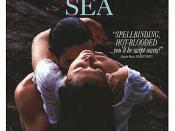Ideological Construction in Narrative Discourse:
A Critical Discourse Analysis of Wide Sargasso Sea
Suzana bt Abd Latif
Background of Study
Jean Rhyss in her letter to Selma Vas Diaz writes,
"When I read Jane Eyre as a child, I thought, why should she write
Creole women as lunatics and all that? What a shame to make
Rochester's first wife, Bertha, the awful mad woman. I immediately
thought I'll write the story as it might have been . She seemed such
a poor ghost. I thought I'd try to write her a life".
- Jean Rhys-
As noted by many, Jean Rhys wrote Wide Sargasso Sea (1966) because she felt
that the first Mrs Rochester, depicted as the 'mad' woman in the attic in Charlotte
Bronte's Jane Eyre (1947), deserved to be given an identity and a history. Thus, her
novel Wide Sargasso Sea is regarded as prequel to Jane Eyre to explain how Bertha
Antoinette Mason came to be in the attic of Thornfield house, and how she became, or
came to be seen as mad. Thus, in Jean Rhys's novel Wide Sargasso Sea, Bertha Mason
is rerepresented as Antoinette Cosway, a real person with needs and motivations for the
things she does.
In reconstructing the identity of Bertha to Antoinnette Cosway in the novel, Jean Rhys gives her a 'voice', which is denied of her in Jane Eyre, hence, subverting the 'silent' other. [2: As pointed out by Tyson (1999), the need of the colonizers to create the 'other', in order to define themselves as the 'center', systematically programmed colonized people to understand themselves as 'other', as marginalized, in relationship to this 'center'.]
Within the perspective of post-colonial theory, therefore, post-colonial
interpretations of narrative discourse reveals a new way to examine world literature,


